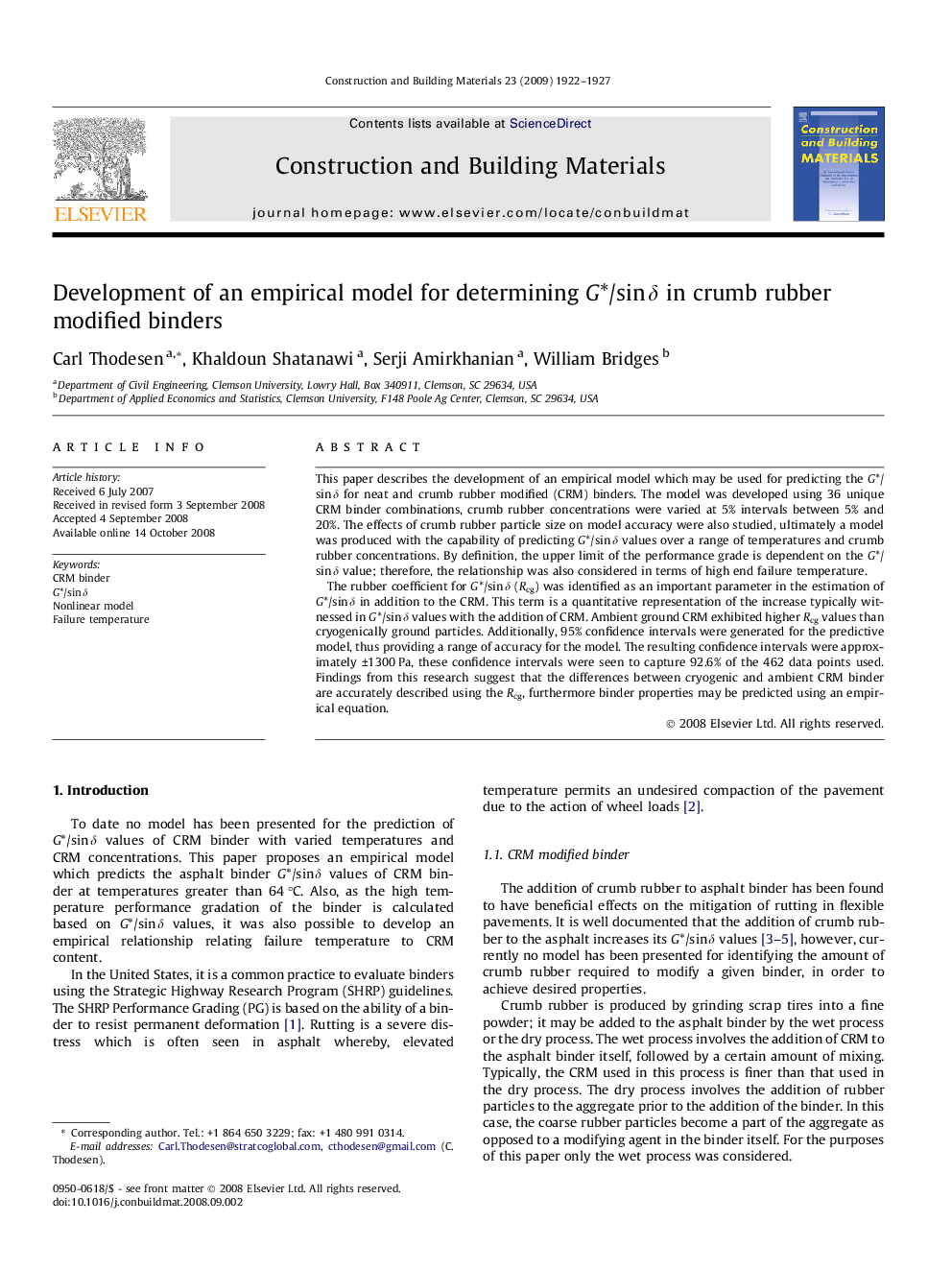| Article ID | Journal | Published Year | Pages | File Type |
|---|---|---|---|---|
| 260737 | Construction and Building Materials | 2009 | 6 Pages |
This paper describes the development of an empirical model which may be used for predicting the G*/sin δ for neat and crumb rubber modified (CRM) binders. The model was developed using 36 unique CRM binder combinations, crumb rubber concentrations were varied at 5% intervals between 5% and 20%. The effects of crumb rubber particle size on model accuracy were also studied, ultimately a model was produced with the capability of predicting G*/sin δ values over a range of temperatures and crumb rubber concentrations. By definition, the upper limit of the performance grade is dependent on the G*/sin δ value; therefore, the relationship was also considered in terms of high end failure temperature.The rubber coefficient for G*/sin δ (Rcg) was identified as an important parameter in the estimation of G*/sin δ in addition to the CRM. This term is a quantitative representation of the increase typically witnessed in G*/sin δ values with the addition of CRM. Ambient ground CRM exhibited higher Rcg values than cryogenically ground particles. Additionally, 95% confidence intervals were generated for the predictive model, thus providing a range of accuracy for the model. The resulting confidence intervals were approximately ±1300 Pa, these confidence intervals were seen to capture 92.6% of the 462 data points used. Findings from this research suggest that the differences between cryogenic and ambient CRM binder are accurately described using the Rcg, furthermore binder properties may be predicted using an empirical equation.
